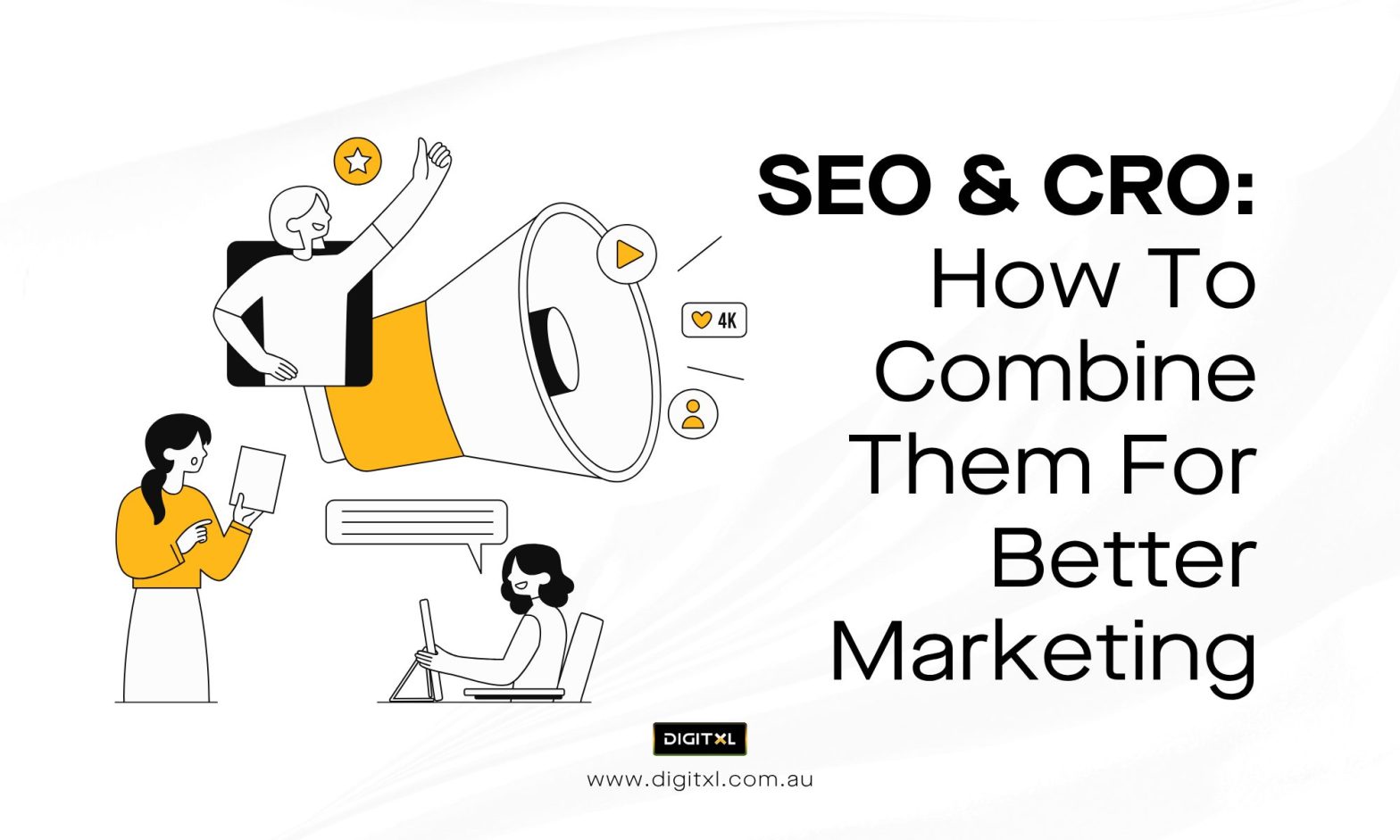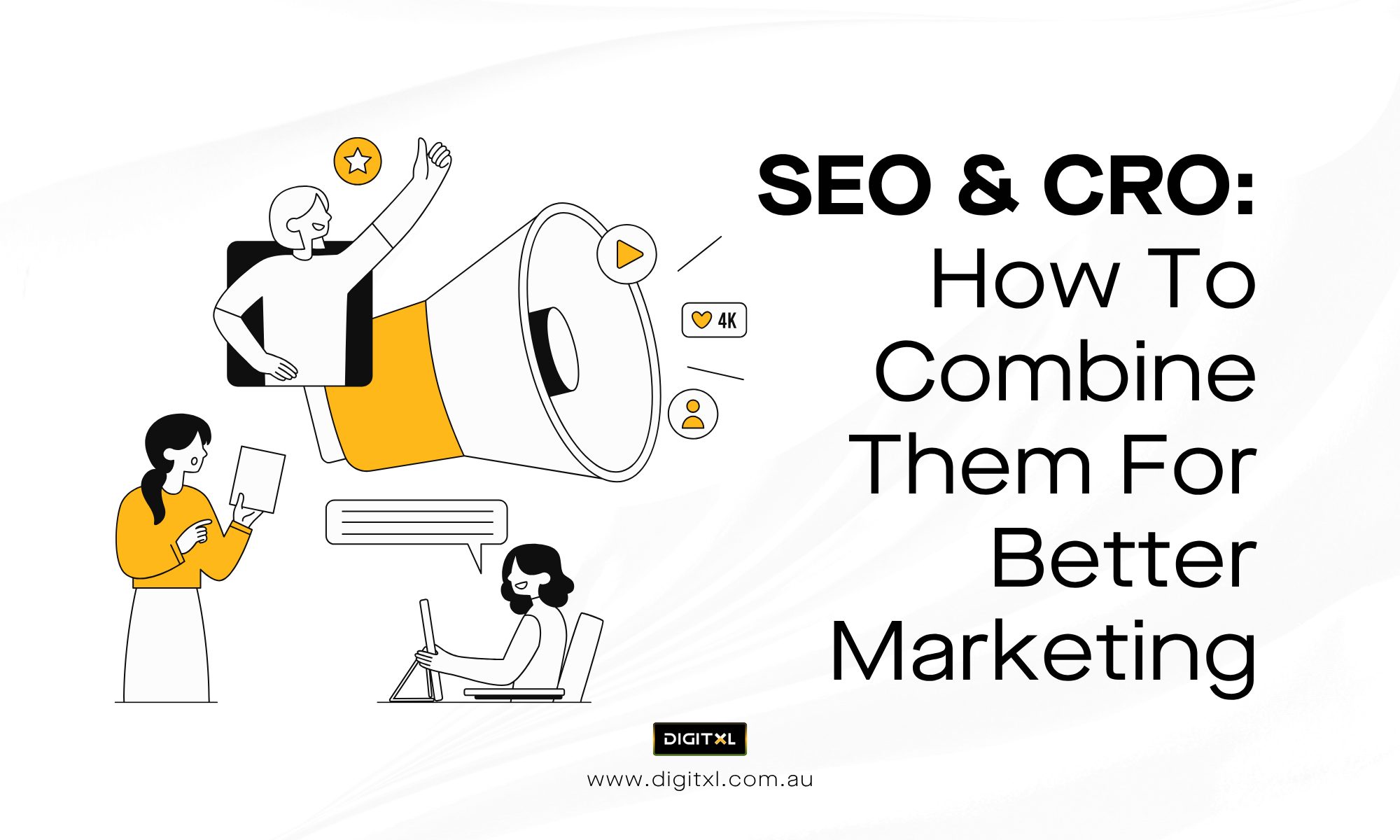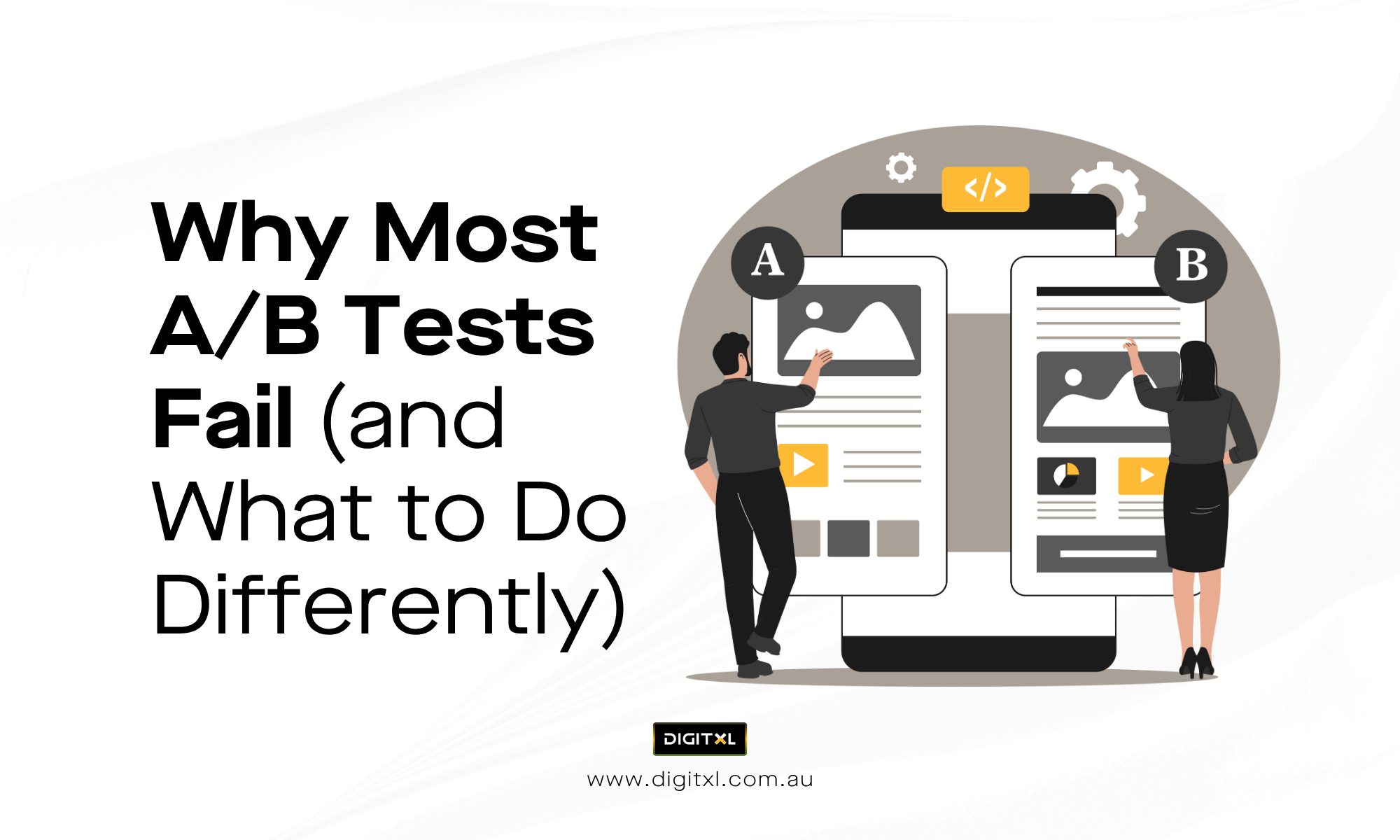- CRO
- SEO
SEO and CRO: How To Combine Them For Better Marketing
18 Nov 2025
Search teams and experimentation teams often work in silos. One group is focused on rankings and traffic, the other on funnels and tests. When people talk about Seo and cro, they usually treat them as separate disciplines – but your customers don’t experience them that way.
From a visitor’s point of view, there’s just one journey:
They search → click → land on a page → decide whether to stay → decide whether to buy or enquire.
This article walks through how to bring SEO and CRO together so you’re not just attracting visitors, but turning more of them into customers.
1. SEO vs CRO – Two Sides of the Same Journey
A simple way to think about it:
- SEO brings the right people to the right pages at the right time.
- CRO makes those pages easier to understand, easier to trust, and easier to act on.
SEO work focuses on search intent, technical health, internal links, and content quality so your pages actually appear when someone is ready to buy or compare.
CRO looks at what happens from the moment that person lands on the page: layout, messaging, forms, offers, and friction points that stop people from moving forward.
Handled together, they form a single growth loop:
- Use search data to understand demand.
- Design journeys that answer that demand clearly.
- Test changes on high-value pages.
Feed those learnings back into your content and site structure.
2. Why You Should Never Treat SEO and CRO as Separate Projects
Here’s what often happens when teams separate SEO and CRO:
- SEO targets keywords that look great in a spreadsheet, but lead to visitors who never convert.
- CRO teams run tests on low-volume pages and then struggle to trust the data.
- Content gets written without thinking about where that traffic will go next.
- Developers get mixed signals from different stakeholders about what matters.
When you join the two:
- Keyword research shapes which pages deserve your design and testing attention.
- Experiments validate not just “what users like”, but which search intents are worth investing in.
- You can prioritise internal links and navigation based on conversion data, not just visits.
This is where external specialists can help. For example, a brand might partner with a cro agency brisbane to improve their high-traffic landing pages while the in-house SEO team continues to grow rankings.
3. How to Build a Shared SEO + CRO Framework
You don’t need a completely new process. You just need both teams working from the same map.
1. Start With a Shared Measurement Plan
Bring SEO, CRO, and key marketing stakeholders into one simple framework:
- Primary goals: leads, sales, sign-ups, enquiries.
- Secondary goals: scroll depth, content engagement, add-to-carts, quote requests.
- Search-aligned segments: brand vs non-brand, product vs category, informational vs commercial.
Every experiment and content change should clearly map back to one of these goals and segments. This also makes it easier to brief external partners such as a cro agency on what matters most.
2. Use SEO Data to Prioritise CRO Tests
Not every page deserves the same attention. Use SEO data to find:
- Pages with high impressions and clicks but poor conversion.
- Keywords with strong purchase intent (e.g. “near me”, “best”, “price”, “book online”).
- Queries where you already rank on page one but have a low click-through rate.
These are prime candidates for CRO experiments: clearer headlines, stronger value propositions, tighter forms, better proof and FAQs.
3. Feed CRO Learnings Back Into SEO
CRO tests give you real-world proof of what messages, layouts, and offers people respond to. Use that to:
- Refine title tags and meta descriptions based on copy that wins in tests.
- Rework page introductions to match the language real customers respond to.
- Adjust internal links to push traffic towards higher-converting sections.
If a layout consistently lifts quote requests on a key service page, that pattern should influence other SEO landing pages as well.
4. Avoid These Common Pitfalls (and Big CRO Strategy Mistakes)
Many teams still fall into the same traps, even when they’re serious about search and experimentation:
- Treating CRO as a “one-off project” after a redesign instead of an ongoing practice.
- Making big design changes without enough traffic to validate them.
- Running tests on pages that don’t align with search intent.
- Ignoring form and checkout friction because “that’s handled by another system”.
- Making technical SEO changes that accidentally break tracking or experiment setups.
Make time to review and document your biggest CRO Strategy Mistakes each quarter. This not only helps you avoid repeating them, it also sharpens how you brief internal teams and partners.
5. Practical Ways to Combine SEO and CRO Week to Week
Here’s how an integrated approach can look in a real team:
1. Shared Backlog
Instead of separate SEO and CRO trello boards or ticket queues, build one combined backlog. Examples of items:
- “Category page: rewrite headline based on winning test copy”
- “Service page: add FAQ block using search queries from Google Search Console”
- “Fix slow hero image on top organic landing page”
- “Test shorter enquiry form on high-intent keyword landing page”
Each item is tagged by type (content, UX, dev, analytics) and by goal (traffic growth, conversion lift).
2. Monthly SEO x CRO Review
Run a short monthly session where:
- SEO presents top-performing and declining pages and keywords.
- CRO presents test outcomes and what those say about messaging and friction.
- Together, you agree which insights move into next month’s backlog.
This keeps both teams looking at the same customer journeys and reduces “random acts of testing”.
3. Shared Guardrails
Agree on non-negotiables before tests go live, such as:
- No experiment that breaks indexability, key internal links, or structured data.
- No content change that removes key information needed for conversion.
- No rollout without basic QA on mobile, analytics, and core forms.
These guardrails are simple, but they save hours of rework and confusion.
6. Where Agencies and Consultants Fit In
Not every business has the time or internal capability to manage both SEO and CRO at a high level. That’s where outside help comes in.
- Specialist testers: Experienced cro consultants can help you design experiments that fit your traffic levels, tech stack, and risk appetite.
- Structured programs: A cro consultancy can bring proven workflows, templates, and reporting structures so your team doesn’t have to invent everything from scratch.
- Location-based support: Some brands prefer local partners – for example, working with a cro agency adelaide for in-person workshops and stakeholder sessions.
Whichever model you choose, the important part is clear ownership: who is accountable for the combined SEO + CRO roadmap, not just individual tasks.
7. Making CRO Strategy Services Work With Your SEO Plan
When you look at your full marketing mix, CRO shouldn’t sit off to the side as a “nice to have”. It should be built into the way you design, measure, and improve your entire digital experience.
Modern cro strategy services typically cover:
- Discovery sessions to map user journeys from search to conversion.
- Deep dives into your analytics, heatmaps, and qualitative feedback.
- Prioritisation frameworks that balance SEO traffic value with on-page conversion value.
- Test planning across high-impact pages (e.g. home, key services, category and product pages, quote forms).
- Reporting that closes the loop between search traffic, experiment performance, and commercial outcomes.
When this work is properly linked to your SEO program, you’re no longer just “getting more traffic” or “running a few tests”. You’re building a repeatable way to grow – based on how real people search, browse, and make decisions on your site.
8. Final Thoughts
Bringing SEO and CRO together isn’t about adding more meetings or more tools. It’s about:
- Agreeing on shared goals and shared metrics.
- Using search data to decide where CRO work matters most.
- Letting test outcomes shape your content and site structure.
- Giving someone clear ownership over the combined roadmap.
Do that, and every improvement you make in SEO gives your CRO work more room to shine – and every successful experiment makes your SEO traffic more valuable.
9. FAQS
Q. How do SEO and CRO actually work together?
A. SEO brings the right visitors to your site, while CRO focuses on what those visitors do once they arrive. When both are planned together, you attract people who are more likely to buy or enquire. You then fine-tune key pages so it’s easier for them to understand, compare and take the next step. An SEO agency can help align these strategies for optimal results.
Q. Should I focus on SEO first or CRO first?
If your site has very little traffic, SEO and basic tracking usually need attention first. Once you have steady traffic to priority pages, CRO helps you make better use of every visit. In practice, most businesses get the best lift by progressing both in parallel, with clear priorities each quarter. An SEO agency can guide this process to ensure you’re making the most of both strategies.
Q. What type of pages are best for combined SEO + CRO work?
A. Pages that attract strong search intent and sit close to conversion are the best starting point. These are often service pages, high-traffic landing pages, quote forms, or key product categories. Improving these pages helps both your visibility in search and the revenue you make from existing traffic. An SEO agency can help identify which pages will benefit most from this combined approach.
Q. How do we measure success when we combine SEO and CRO?
You still track rankings and organic visits, but you also watch on-page actions more closely. Core metrics include enquiries, sales, form completion rate, time on page, and scroll depth. The real value comes from looking at these together, so you can see which search queries actually turn into customers. With the right expertise from an SEO agency, you can track and optimize these metrics effectively.
Q. Do I need a specialist team or agency to manage SEO and CRO together?
You can start in-house if you have someone comfortable with analytics, content, and UX testing. As things grow more complex, a specialist partner, such as an SEO agency, can help with structured test programs and technical fixes. What matters most is clear ownership of the combined SEO + CRO roadmap, rather than treating them as separate projects.





